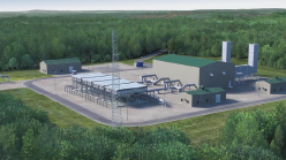WASHINGTON—The time to obtain required federal permits from agencies other than the Federal Energy Regulatory Commission for interstate natural gas pipeline projects actually has increased since the passage of the Energy Policy Act of 2005, a law with the stated intent to streamline and expedite federal authorizations for such projects, a new study by the INGAA Foundation finds.
The study, Expedited Federal Authorization of Interstate Natural Gas Pipelines: Are Agencies Complying with EPAct?, found that for interstate natural gas pipeline projects:
- The percentage of federal authorizations that were issued more than 90 days beyond FERC’s issuance of an Environmental Impact Statement or an Environmental Assessment rose from 7.69% prior to the implementation of EPAct 2005 to 28.05% after the act.
- Federal authorizations issued 180 days or longer after FERC’s issuance of an Environmental Impact Statement or an Environmental Assessment rose from 3.42% prior to the act to 19.51% after the act.
The study also found that the only provision in EPAct 2005 that provides an applicant with recourse in the face of agency delay—a petition to the U.S. Court of Appeals for the D.C. Circuit—has rarely been used, allowing agencies to miss the required federal authorization deadline without consequence.
“There are many undesirable consequences of permitting delays, ranging from increased project costs to missed in-service dates, along with a variety of associated adverse business, environmental and other implications,” explained INGAA Foundation President and CEO Don Santa. “The study suggests amending the Natural Gas Act to provide FERC effective tools for enforcing deadlines at other agencies regarding natural gas pipeline project applications. That’s something we hope legislators will consider. U.S. natural gas is clean burning, abundant and affordable. We need to encourage timely pipeline development to ensure that consumers realize the benefits of domestic natural gas.”
The INGAA Foundation study focused on an EPAct 2005 provision that authorizes FERC to establish a schedule for federal authorizations. The study does not review FERC certification timetables except in relation to whether other federal agencies met the FERC schedule. To collect data for the study, INGAA Foundation contractor Holland & Hart surveyed respondents representing 51 interstate natural gas pipeline projects from both before and after the effective date of EPAct 2005.
The study did not attempt to identify or evaluate every underlying cause of delay for each federal authorization, and thus no direct causal connection was identified between the passage of EPAct 2005 itself and the increase in time required to obtain all required federal authorizations for interstate pipeline projects. Rather, the study identified various causes for delay, including agency inexperience and inadequate agency staff, interagency conflicts, FERC’s inability to enforce deadlines, applicant changes to the project requiring additional or revised environmental review, and site-access problems. Providing FERC with the tools it needs to enforce deadlines may help to alleviate permitting delays that appear to have increased in recent years, the study finds.
The study suggested several ways to reduce future permitting delays including:
- Providing consequences when agencies fail to meet the FERC deadline;
- Planning for the project early and thoroughly; and
- Establishing better applicant-agency relationships and lines of communication.
The study is available here or at http://www.ingaa.org/EPAct2005.aspx







